Sachin Jambawalikar
Information Bottleneck Attribution for Visual Explanations of Diagnosis and Prognosis
Apr 07, 2021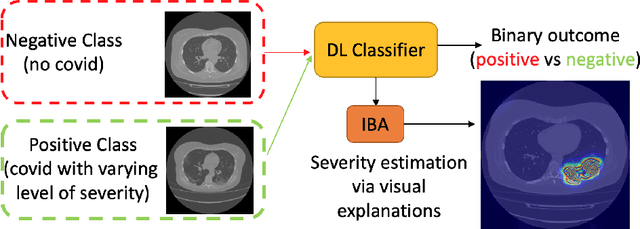



Abstract:Visual explanation methods have an important role in the prognosis of the patients where the annotated data is limited or not available. There have been several attempts to use gradient-based attribution methods to localize pathology from medical scans without using segmentation labels. This research direction has been impeded by the lack of robustness and reliability. These methods are highly sensitive to the network parameters. In this study, we introduce a robust visual explanation method to address this problem for medical applications. We provide a highly innovative algorithm to quantifying lesions in the lungs caused by the Covid-19 with high accuracy and robustness without using dense segmentation labels. Inspired by the information bottleneck concept, we mask the neural network representation with noise to find out important regions. This approach overcomes the drawbacks of commonly used Grad-Cam and its derived algorithms. The premise behind our proposed strategy is that the information flow is minimized while ensuring the classifier prediction stays similar. Our findings indicate that the bottleneck condition provides a more stable and robust severity estimation than the similar attribution methods.
The International Workshop on Osteoarthritis Imaging Knee MRI Segmentation Challenge: A Multi-Institute Evaluation and Analysis Framework on a Standardized Dataset
May 26, 2020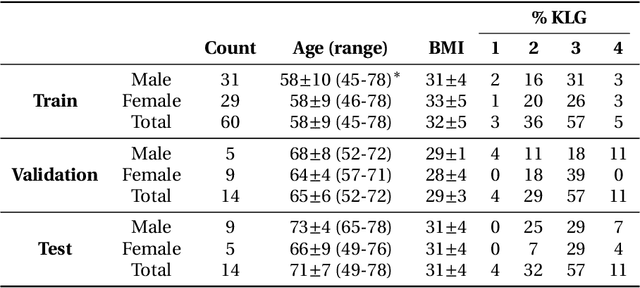
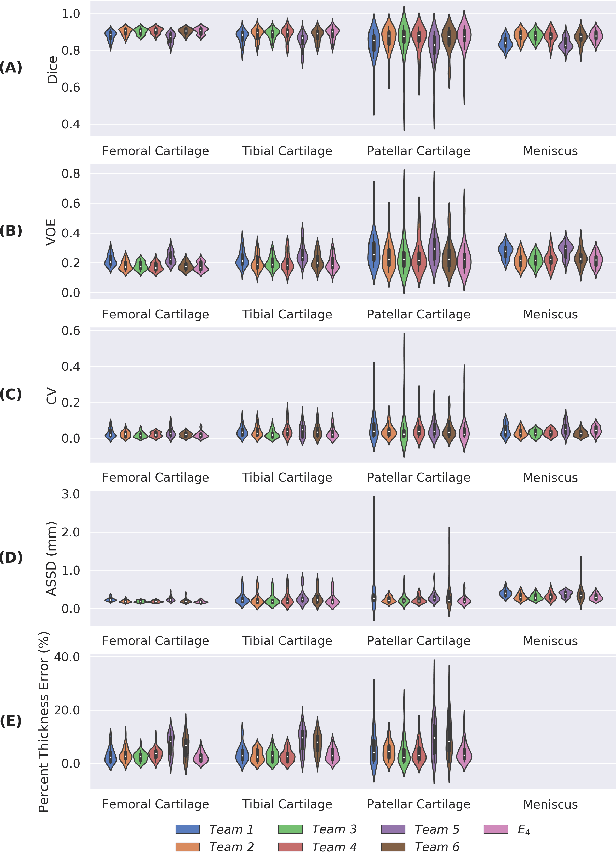
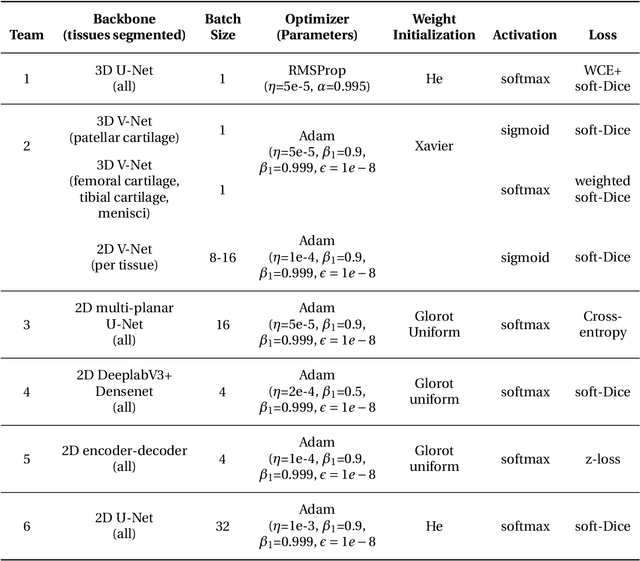
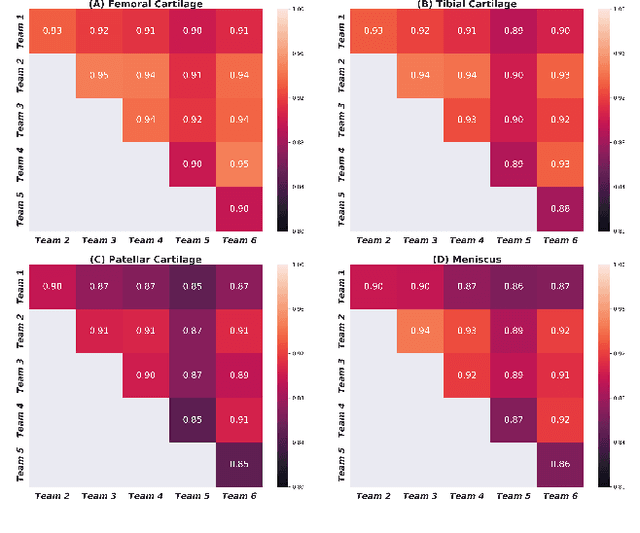
Abstract:Purpose: To organize a knee MRI segmentation challenge for characterizing the semantic and clinical efficacy of automatic segmentation methods relevant for monitoring osteoarthritis progression. Methods: A dataset partition consisting of 3D knee MRI from 88 subjects at two timepoints with ground-truth articular (femoral, tibial, patellar) cartilage and meniscus segmentations was standardized. Challenge submissions and a majority-vote ensemble were evaluated using Dice score, average symmetric surface distance, volumetric overlap error, and coefficient of variation on a hold-out test set. Similarities in network segmentations were evaluated using pairwise Dice correlations. Articular cartilage thickness was computed per-scan and longitudinally. Correlation between thickness error and segmentation metrics was measured using Pearson's coefficient. Two empirical upper bounds for ensemble performance were computed using combinations of model outputs that consolidated true positives and true negatives. Results: Six teams (T1-T6) submitted entries for the challenge. No significant differences were observed across all segmentation metrics for all tissues (p=1.0) among the four top-performing networks (T2, T3, T4, T6). Dice correlations between network pairs were high (>0.85). Per-scan thickness errors were negligible among T1-T4 (p=0.99) and longitudinal changes showed minimal bias (<0.03mm). Low correlations (<0.41) were observed between segmentation metrics and thickness error. The majority-vote ensemble was comparable to top performing networks (p=1.0). Empirical upper bound performances were similar for both combinations (p=1.0). Conclusion: Diverse networks learned to segment the knee similarly where high segmentation accuracy did not correlate to cartilage thickness accuracy. Voting ensembles did not outperform individual networks but may help regularize individual models.
Cross-modality Knowledge Transfer for Prostate Segmentation from CT Scans
Sep 11, 2019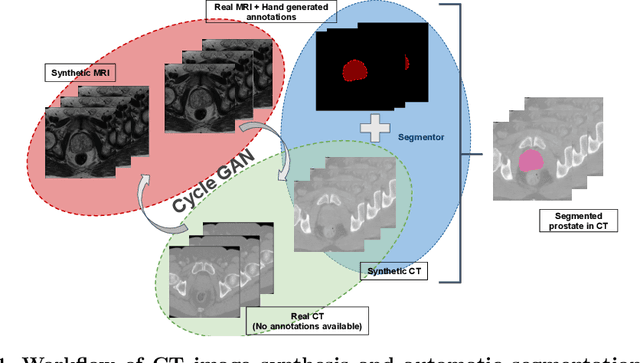


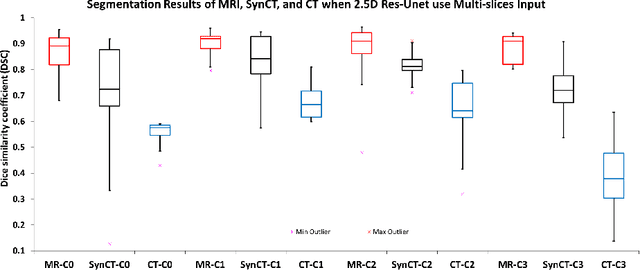
Abstract:Creating large scale high-quality annotations is a known challenge in medical imaging. In this work, based on the CycleGAN algorithm, we propose leveraging annotations from one modality to be useful in other modalities. More specifically, the proposed algorithm creates highly realistic synthetic CT images (SynCT) from prostate MR images using unpaired data sets. By using SynCT images (without segmentation labels) and MR images (with segmentation labels available), we have trained a deep segmentation network for precise delineation of prostate from real CT scans. For the generator in our CycleGAN, the cycle consistency term is used to guarantee that SynCT shares the identical manually-drawn, high-quality masks originally delineated on MR images. Further, we introduce a cost function based on structural similarity index (SSIM) to improve the anatomical similarity between real and synthetic images. For segmentation followed by the SynCT generation from CycleGAN, automatic delineation is achieved through a 2.5D Residual U-Net. Quantitative evaluation demonstrates comparable segmentation results between our SynCT and radiologist drawn masks for real CT images, solving an important problem in medical image segmentation field when ground truth annotations are not available for the modality of interest.
 Add to Chrome
Add to Chrome Add to Firefox
Add to Firefox Add to Edge
Add to Edge